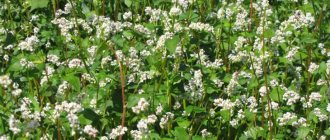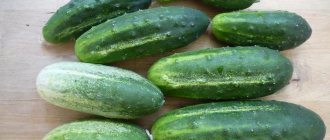Why I decided to grow asparagus at my dacha
Asparagus (or asparagus) is a popular vegetable crop today. She is given such epithets as “miracle vegetable”, “royal plant”. It’s no surprise that I decided to give asparagus a place in my garden:
- This plant is a perennial. It can grow productively (forming up to 50 shoots) for 20 years on the same bed.
- Asparagus is not only incredibly tasty, but also a healthy vegetable, rich in elements necessary for the human body.
- The culture is cold-resistant and unpretentious: it feels great in both southern and Siberian weather. However, this characteristic depends on the variety: some asparagus cannot withstand spring frosts, while some survive frosts down to -30 C.
- Asparagus is one of the earliest crops. I collect the first shoots in April-May.
- There is a great variety of preparations for this vegetable - steaming, stewing, boiling, frying, grilling. Asparagus can be eaten raw, canned, or frozen.
I would like to add that this is an excellent crop for beginning gardeners. You can choose any of the methods of growing it, spend a minimum of time on care and enjoy a rich harvest.
Forcing asparagus in winter
This universal vegetable crop is successfully cultivated not only in summer, but also in winter (in greenhouses) and spring (in greenhouses). So let's talk about growing asparagus in winter and spring in more detail. You can get asparagus in winter and early spring by forcing shoots from the rhizomes of adult 5-6-year-old plants:
- in October, the rhizomes of the plants must be dug up and stored in the basement until December, the temperature in which is maintained at a level from 0 to + 2 ° C;
- Around the beginning of December, asparagus rhizomes should be planted in a greenhouse, in small containers, pressed tightly against each other, trying to place at least 18-20 pieces per 1 m². They are covered with humus (about 20 cm) on top, the containers are additionally covered with black film;
- For the first week, the temperature in the greenhouse is maintained at about +10°C, but as soon as the roots begin to grow, it is raised to +18°C. It is necessary to maintain the temperature regime for about 2 months - the entire time the harvest lasts.
When to plant asparagus in the garden
There are no clear dates for planting asparagus in open ground. If you propagate it with seeds, then you need to soak them in April-May - by mid-June they will be ready to move to a permanent place. By this time, soil and air temperatures that are comfortable for asparagus will have been established in all Russian regions.
By region
If you are planning a spring transplant of cuttings, rhizomes, or asparagus seedlings, I recommend relying on these dates:
- The middle zone is the beginning of May.
- Siberia, Ural - mid-to-late May.
- Southern latitudes – mid to late April.
For autumn planting and replanting, I advise you to focus on the timing:
- The middle zone is mid-October.
- Siberia, Ural - early October.
- Southern latitudes – end of October.
I definitely study the long-term weather forecast - every season these dates shift slightly due to the presence or absence of the threat of frost.
According to the lunar calendar
Let me present favorable dates for planting asparagus:
- April: 1-4, 8-13, 15-19, 23-27, 29-30.
- May: 1-3, 7-11, 13-17, 21-25, 27-31.
- October: 1-4, 6-12, 16-20, 22-26, 30-31.
When growing asparagus from seeds, remember that the planting date is considered the beginning of development - placement in an aquatic environment (soaking).
Harvesting
When growing asparagus, you need to be patient, since the harvest can only be harvested in the third year. This can be done earlier, but there will be a risk of the death of the culture, since it has not yet reached full strength. If the plants are weak even in the third year, then you need to wait a little longer.
In early spring, before harvesting, deep loosening of the rows and hilling with soil and humus are required. The technical ripeness of the crop is judged by the shoots - they should reach 7-10 cm in height and 0.7-1 cm in diameter. They appear in the 2-3 weeks of April.
The stems can be broken off, but it is better to use a knife. First you need to carefully rake away the soil, cut off the stem at the very surface of the soil and hill up the bush again.
The harvest should be harvested before the onset of heat. The stems need to be cut off every 2-3 days. It is better to do this in the morning or evening.
It is important not to cut off too many shoots. For the first cutting, 5 roots are enough from one plant; later, 15-25 stems can be collected from an adult bush within a month. You should always leave a few pieces so that the bush continues to develop.
After harvesting, you need to fertilize the soil. Wood ash and humus are effective; they need to be scattered between the rows, planted 5 cm deep and watered. Be sure to loosen the soil after rain or watering.
Asparagus varieties for growing in the country
Cultivated asparagus has more than 300 plant varieties. I’ll omit the decorative and medicinal ones and introduce you to the most famous varieties of vegetable asparagus.
In the open ground
Although asparagus is an unpretentious, frost-resistant plant, I recommend choosing early, mid-season varieties for open beds:
- Snowy head. A mid-early variety with small shoots with a pointed, loose greenish-cream head. It is distinguished by very delicate pulp, the taste of which can be compared to green peas.
- Arzhentelskaya. The plant produces large, snow-white, low-fiber shoots. They can be eaten fresh or canned.
- Early yellow, Harvest-6, Danish white. Varieties specially bred for growth in open beds.
I don’t stop at one variety – I’m constantly looking for and trying new ones.
In the greenhouse
For growing in open ground, pay attention to ultra-early, late-ripening varieties:
- Glory to Brunswick. One of the popular varieties that produces juicy and tender snow-white shoots. They are suitable for both fresh consumption and canning. The variety is distinguished by its excellent taste and good yield.
- Сonnovers Colossal. An early-ripening variety that thrives in greenhouses.
- Franklin. High-yielding hybrid for closed ground.
- Sieve. A hybrid variety bred by French breeders.
- Mary Washington. A high-yielding variety obtained by American scientists.
Varieties for greenhouses are also quite suitable for home growing in pots.
Choosing a place and soil for planting asparagus
Asparagus does not “present” any special requirements for the place of growth. Prefers well-lit, weed-free places, fertile and light substrates. According to my observations, it feels best on sandy loam soil. When choosing a place for asparagus, keep in mind that this crop is perennial. I usually plant it along the walls of outbuildings or near the fence.
Soil preparation varies slightly depending on when you choose to plant it. In the spring, I try to plant the rhizomes of the plant before the buds begin to develop:
- I fertilize the asparagus plot with humus - 10 kg of fertilizer per 1 m2.
- I dig up the earth onto the bayonet of a shovel.
- The row spacing is at least 60 cm. Between plants in the same line is at least 30 cm. I try not to plant more than 3-4 rhizomes per “square”.
- I dig trenches 30 cm deep for the seed. I cover the rhizomes with substrate so that they remain in the recess.
- Finally, I water the plantings thoroughly.
Another way to plant asparagus is before winter. Here you need to thoroughly fertilize the soil:
- For 1 m2 of ridge I add 20 g of ammonium sulfate, 60 g of superphosphate, 30 g of potassium sulfate.
- I'm digging up the area.
- I plant rhizomes according to the same 60x30 cm pattern.
- I do not bury the seed material into the substrate, but, on the contrary, I make an earthen mound above it, which will protect the rhizomes from winter frosts.
Asparagus goes well with many vegetable crops - radishes, beans, lettuce. Therefore, in the first summers, when asparagus does not grow much, I plant these plants between the rows.
Sowing asparagus seedlings
Many gardeners and gardeners do not like to grow asparagus with seeds, as they blame this method for poor germination. But I have verified in my own experience that it works very well if you do the right preparation. Depending on the region, asparagus can be grown using this method either through seedlings or by direct sowing in an open bed.
I start planting seedlings around the beginning of April:
- I’m preparing a soil mixture: last year’s manure + peat + sand + garden soil (1:1:1:2). I treat it with a solution of potassium permanganate.
- I dilute a little growth stimulant in warm water. I soak the seeds in liquid for 2-4 days.
- I wrap the seed in a damp cloth and wait until seedlings 1-3 mm long appear.
- I prepare seedling cassettes or individual cups and pots.
- I plant the seeds in the prepared soil mixture, deepening them to 1 cm.
- I take it to a warm place (25-27 C).
Let me warn you that asparagus seeds take a very long time to germinate - I waited 1.5 months. Then green “feathers” appear above the ground - asparagus seedlings.
Seedling care
Until the seeds have sprouted, they also need care - spraying the soil with a spray bottle as it dries. There is an easier way: before germination, cover the bowl with the seedlings with glass. But do not forget to periodically ventilate and wipe the glass from condensation.
After the first shoots appear, care does not change. Continue to irrigate the soil mixture with water from a spray bottle. Do not forget to remove the glass when the first shoots appear - otherwise they will suffocate.
Picking
Asparagus seedlings are ready for planting in a permanent place by mid-June. You can replant the rhizomes in the fall or next spring. Before moving, plants are recommended to be trimmed - shortening the roots by 3-4 cm. I use a technical knife for this, not forgetting to treat it after each plant in a disinfectant solution.
Transplanting
I carry out all the necessary preparations and planting according to simple instructions:
- In the fall, I clear the selected area of weeds and plant waste.
- I add 10-15 kg of last year's manure or compost per 1 m2. I dig the ground deep.
- In the spring I carefully loosen the area.
- I make rows at a distance of about 70 cm.
- The depth of each hole for asparagus is 30 cm, the distance between seedlings in one line is at least 40 cm.
- I pour humus into the bottom of the depression in a mound - such a height that the top is at ground level. If the soil on the site is fertile, humus can be replaced with ordinary garden soil.
- I carefully straighten the roots of the seedling with my hands in the formed mound. I sprinkle the plant with 5-7 cm of soil and compact it with my palms.
- I water the plantings - as soon as the moisture is absorbed, I mulch the bed. To do this, you can use the same garden soil, as well as straw, compost, sawdust, pine needles and other light organic compounds.
Now all that remains is to wait until the plant takes root and provide it with simple care.
Diseases and pests
Asparagus is quite resistant to diseases and pests, but sometimes they cannot be avoided:
- Red rot, also called root rot . The disease affects the root collar and roots, leading to their death and the death of the above-ground part of the crop. If the problem is detected in a timely manner, you can use Fundazol. The treated area must be covered with thick plastic wrap. If the disease has spread, the entire planting will have to be destroyed.
- Rust . This disease affects asparagus shoots and usually develops in June. It is revealed by darkening of the stems and the appearance of wounds. In this case, it is necessary to use fungicides in the form of spraying.
- Asparagus leaf beetle . This problem usually occurs in July. Small bugs are black and yellow, there is a red stripe on the blue wings, and the larvae are black. They feed on asparagus leaves and tender parts of the plant. They must be combated with insecticides - Fufanon, Fitoverm, Aktellik.
- Asparagus fly . This insect can be recognized by its brown body, yellow head and legs. It infects shoots, laying eggs in them. The larvae cause the stems to bend and wilt. The pest must be controlled with insecticides. Remove the affected parts of the plant and burn.
The fight against pests and diseases must begin in advance, resorting to preventive measures. Be sure to inspect the plantings every week in order to promptly identify the problem and solve it without excessive losses.
Sowing asparagus seeds in open ground
Let me immediately explain that in open ground I do not immediately plant asparagus in a permanent place - the first “habitat” is the seedling beds. I begin work in the spring, as soon as the threat of frost has passed and the soil has warmed up to at least 15 C. I will explain the entire technology in order:
- Since it will take a very long time to wait for dry seeds to sprout, the first thing I do is soak them in warm water (about 30-35). I move the bowl to a warm place - to the same heating battery.
- It is enough to soak asparagus seeds for 5-6 days. I don’t forget to change the fluid to fresh one every day.
- I wrap the seed material in damp cloth for 3-7 days until germination. To prevent the fabric from drying out, I place it in a plastic bag, which I tie tightly.
- While the seeds are hatching, I prepare a seedling bed for them. I add 10 kg of rotted compost or manure per 1 m2. Organics can be replaced with a complex mineral complex - 100 g of composition per 1 m2.
- I leave row spacing up to 25-40 cm, I sow the seeds themselves, maintaining gaps in the line of 5-7 cm. Planting depth is approximately 2 cm.
- After 3-4 weeks, I thin out the seedlings - leaving only strong shoots. The distance between them is at least 10-15 cm.
From my own experience, I judge that asparagus seedlings in open ground develop very slowly - over the summer they will grow by 10-15 cm. Therefore, they will be ready for transplanting to a permanent place only in the spring-autumn of the next season. All this time she needs to be provided with the same care as adult plantings:
- Regular watering, loosening, weeding.
- Fertilizers. In June - 1-2 fertilizing with nitrogen composition. For 1 m2 – 10 g of urea or ammonium nitrate. Can be replaced with organic matter - a solution of manure (1:6). At the end of August - fertilizing with mineral fertilizers (phosphate and potassium) strictly according to the instructions.
By October, I cover the asparagus seedlings with a layer (3-5 cm) of peat or humus. I additionally protect the top with decayed leaves or spruce branches.
Methods for propagating asparagus
Sowing by seeds is far from the only method of propagating asparagus. Let me introduce you to other popular methods:
- Dividing bushes. This is the easiest plant to propagate and is available in spring, summer and fall. If your neighbors grow asparagus, contact them during replanting (young asparagus is replanted annually, and adult asparagus every 10 years). Choose shoots for planting that have at least 1 shoot.
- Propagation by petioles. From March to June, asparagus can be propagated through last year's shoots. They are cut into cuttings, which are then rooted in moist sandy soil. For better development, the cuttings are covered with a cap from the same plastic bottle. Caring for such seedlings is not difficult - you need to periodically remove the caps for ventilation and moisten the plants by spraying. After 1-1.5 months they are already producing roots - the asparagus is picked and transplanted to a permanent bed.
I recommend starting to grow asparagus with easy methods (cuttings, rhizomes, divisions), and only then try new varieties by buying seeds.
growing asparagus
Caring for asparagus in open ground
One of the obvious advantages of this vegetable is its easy care. It comes down mainly to watering, loosening and fertilizing.
Watering
Asparagus is not a moisture-loving plant. It requires systematic watering, but in small portions. Both waterlogging, stagnation of moisture, and excessive drying out of the soil are detrimental to the crop.
watering asparagus in the garden
Feeding
Asparagus is one of the plants susceptible to fertilizer. I checked it from my own experience - the yield of asparagus directly depends on the timeliness of fertilizing. As you remember, both in spring and autumn we plant the plant in already fertilized soil. After that I follow a simple schedule:
- About a month after sowing, I fertilize the planting with a solution of mullein (1 part dry mass to 5 parts water).
- Every year after harvesting (approximately by the end of June) I add mineral nutrition: per 1 m2 - 30 g of urea, 30 g of potassium salt, 30 g of superphosphate.
- By July (then the asparagus “starts to grow” again after cutting the crop), organic fertilizer is needed - for example, an aqueous solution of chicken manure (1:10).
- The last feeding of asparagus should be done before the first frost - in the last weeks of October. Most often I use a complex organic composition or add potassium salt and superphosphate (30 g of each preparation per 1 m2).
When flowering, asparagus does not need fertilizers - I successfully replace them with mandatory treatment with insecticides. This simple prevention allows you to forget about pests.
fertilizers for feeding the garden
Weeding and loosening
I have already written that asparagus does not do well when surrounded by weeds. Therefore, I periodically manually weed the bed once every 1-2 weeks.
I don’t forget to carefully loosen the plants after each watering or heavy rain, breaking up the dense earthen crust. Over the summer, the plant needs at least 7-8 such procedures.
Hilling
Asparagus grows on ridges - I pre-shape them when sowing or replanting the crop. As the plant grows, I maintain the height of the mounds, which are eroded by watering and rain. But only until the harvest - by April I carry out “unplanting”.
On a flat surface it is easier to notice the appearance of edible asparagus sprouts. This comparison of ridges gives the plant the opportunity to develop stems and accumulate more nutrients. After harvesting, I carry out hilling again.
In the fall, I cut off all ground shoots on both mature and young plantings. I hill up the plants again and additionally insulate them with a layer (about 5 cm) of compost or peat - you will need at least 1.5 buckets per 1 m2.
Care
In the second year after planting asparagus, mineral fertilizers are applied. The soil along the rows needs early and high-quality loosening. However, it is important to be careful not to damage the vulnerable roots and harm the plant.
Dry weather requires increased care from the farmer: his task is to keep the soil constantly moist. Failure to maintain soil moisture levels can result in deterioration in the taste and texture of the future harvest: asparagus can become fibrous, tough and bitter.
Asparagus shoots that dry out in October should be carefully cut off close to the ground, taking all precautions so as not to damage the rhizome. The resulting dry parts of the plant must be burned. For asparagus that is not affected by diseases, the tops can be left: they will serve as a natural protection for the rhizomes from hypothermia during the winter season.
In autumn, young plantings (at the age of 1 and 2 years) and fruit-bearing plants must be fertilized again with superphosphate (up to one and a half kilograms per 10 square meters) and 40% potassium salt (about 0.3 kg). After applying fertilizing, the soil between the rows is deeply loosened. Autumn mulching with peat brings a good effect - for best results the layer should be thick - about 10 centimeters).
In the absence of snow or little snow cover, asparagus seedlings in the nursery are securely covered with straw, leaves or manure.
In early spring, the mulch is loosened and incorporated into the soil as top dressing. This operation must be carried out annually without fail. In April, the soil, poured in the form of rolls onto the rows of fruiting asparagus, must be carefully leveled and lightly compacted. The width of the windrows at the base in the first years of cultivation is 40 centimeters, in subsequent years - about 50. This simple manipulation makes it easy to detect cracks in the ground above the asparagus seedlings - the appearance of defects indicates that the seedlings can be cut.
What difficulties arise when growing asparagus?
Although asparagus is an unpretentious crop, when growing it we may encounter problems - infections and pests.
Disease Prevention
I note that asparagus is a very disease-resistant plant. However, the causative fungus Helicobasidium purpureum poses a great danger to it. When damaged, asparagus withers within a few days. The disease can be easily identified by the shedding of “openwork” from the branches. But this is only a visible manifestation: the above-ground part begins to die off after severe damage to the root collar and root system.
Prevention of such an infection is treatment with Fundazol. Already infected plants cannot be saved - they need to be dug up and destroyed. Healthy neighbors are also treated with Fundazol and additionally isolated with cling film.
The plant may suffer from fusarium - root rot. The branches also begin to crumble and the asparagus dies. At the initial symptoms, fusarium is eliminated with the same “Fundazol”. If the disease is advanced, the only thing left to do is destroy the plant.
Another common disease of asparagus is rust. The shoots become covered with dark spots, which increase in size - pathogenic spores ripen in them. The infection can be controlled with systemic fungicides. Prevention consists of disinfecting the soil and the seeds themselves before planting. The easiest way to do this is to use a strong (raspberry) manganese solution.
Pest Control
I'll tell you about uninvited guests that can harm vegetable asparagus:
- Asparagus leaf beetle. The larvae of this pest gnaw the green part of the bushes - the plants quickly die from such damage. You can resist the leaf beetle by using insecticides - “Fufanon”, “Fitoverma”, “Aktellika”, etc.
- Asparagus fly. The pest feasts on young spring shoots and gnaws tunnels in them, making them inedible. You can save plants from flies by treating them with chlorophos.
asparagus leaf beetle
In order not to resort to chemicals, I do not forget about preventive measures:
- I plant lavender, calendula, marigolds, basil, and tomatoes nearby. These plants can repel pests.
- I do not plant asparagus on acidified and heavy soils. The normal value for a plant is pH 6-7.
- I promptly remove weeds and plant debris from the beds.
- I do not allow the substrate to become waterlogged.
- In the fall, I trim and burn all asparagus shoots.
- Before planting or replanting asparagus, I disinfect the area with Bordeaux mixture, Fitosporin or Topaz.
Asparagus is easy to grow, tasty and healthy. Does not require specific care, is resistant to unfavorable climates, pests and infections. Since there are many ways to grow asparagus, even a beginner can grow it.
Medicinal properties of asparagus
Asparagus is used not only in cooking, but also in alternative medicine. But since it has contraindications, you should consult a doctor before use.
Asparagus is a source of vitamins, folic acid, dietary fiber, and microelements. A dietary, low-calorie product forms connective tissue, strengthens bones, participates in the hematopoietic process, and has a positive effect on the functioning of the kidneys, heart, and liver. Due to its folic acid content, asparagus is recommended for use during pregnancy.
The asparagus diet is useful for people after a heart attack, as the product dilates blood vessels, stimulates the heart muscle, lowers blood pressure, and removes waste and toxins.
Despite the large amount of useful substances, asparagus is not recommended for use for the following diseases:
- gastritis, stomach ulcer during exacerbation;
- articular rheumatism;
- cystitis;
- prostatitis;
- individual intolerance.
Asparagus is a healthy, dietary product that can be grown in your garden. The plant is unpretentious and rarely suffers from diseases and pests. Before sowing seeds, you need to know how to grow asparagus in the country. By listening to the advice of professionals, you can easily grow a spreading bush that will produce a harvest throughout the warm season.











